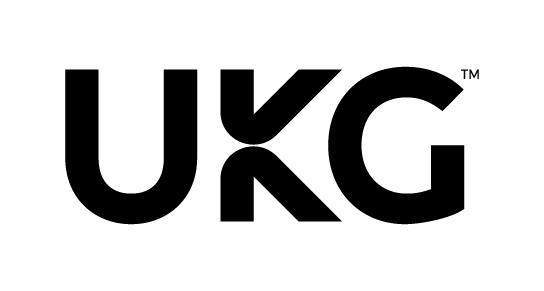Humanizing the Employee Experience: The Role HR Plays in the Evolving World of Work
Understand how to ensure that your organization remains ‘people-first’ – and get to know how this links to success in core areas of HR transformation.
Get to know to create a positive working experience and what that looks like today.
Discover strategies that enhance engagement and the working experience and understand why that's good for operations and strategy.



Simply put, the world of work is changing. Employee priorities are evolving, collaboration and communication channels are being disrupted, and new structures of work are still bedding in. Whilst this affects so many areas of business, this ongoing transformation has elevated the importance of keeping the workforce happy and positive, and delivering exceptional experiences of work.
Of course, this has put huge pressure on HR to provide on this new and uncertain landscape. To understand what your people want and how to deliver for them as your organization continues to transform, as well as how to ensure this all drives productivity and operational excellency, Kate Graham, Head of Content Labs and Insights at UNLEASH is joined by Teresa Smith, Senior Managing Partner, HCM Strategic Advisory Group at UKG and Erika Sandoval, Partner, HCM Strategic Advisory Group at UKG to clarify how to do this excellently and create HR strategies that drive transformational changes to attract, support, and enhance engagement that then drives better productivity as well as operational efficiencies.
Watch on-demand to:
- Understand the importance of ‘moments that matter’ in crafting a good work experience and what impacts this crucial part of work.
- See how to create real impact in key areas of the employee lifecycle.
- Get step-by-step insight into how to drive improvements, in order to drive transformation, in key employee processes.
There are many more variables with employees than we [HR] may actually realize.
Teresa Smith, Senior Managing Partner, HCM Strategi Advisory Group, UKG
How to understand what your employees want?
For HR, getting to know what employees want can often be a case of knowing where to start when it comes to transforming what work is at your business.
For Smith, who shared her experiences of projects in the past where it was crucial that company leadership got to understand what different employees wanted from work (and what experiences formed that), that starting point can be as simple as the leadership modeling vulnerability and openness and encouraging others to share as well. And, as Sandoval added, this should be aided by trying to understand the whole employee: not just what they want in their work life, but what they want in their personal life, too.
Understanding what employees want should also be underpinned by a theoretical understanding of why people work, argued Smith. This means accepting that people work, primarily, to make a living and access security and benefits and that, increasingly, people want to work to support their lifestyle, too. Other factors discussed in the webinar that drive what employees want from work also included personal fulfillment, such as being challenged and achieving and being recognized, and social interactions that help create belonging and fulfilling networks.
Here is where Smith said it gets difficult: increasingly, employees expect employers, via management to deliver all of this for them. And – and perhaps this is obvious – different employees have different wants so HR has to start to differentiate. For example, at the separate parts of the career and employee lifecycle, employees likely want different experiences and opportunities. Early-career employees likely want more educative input whereas more senior employees are probably looking to maintain skills, develop leadership credentials, and focus on other priorities. The lesson here for HR is to remember to not create a one-size-fits-all response to their employees.
It means there’s a lot for the function to do as any understanding is only one part of the issue: it’s got to be followed by looking at how that can be the base for improving engagement with, and experience of, work.
How can HR impact the employee experience?
For Sandoval, a central part of impacting the employee experience for the better relies on HR understanding how to align general work trends with an understanding of what the workforce presently wants. To easier understand this, she suggested looking at how this works in the three main channels of where employees experience work: human-to-human interactions; physical experiences; and digital experiences too.
Focus here, Sandoval suggested, should center around wanting to improve professional and personal moments that matter – which range from ad-hoc chats around a water cooler to how an employer supports a worker if they plan to start a family. Identifying these will be increasingly important as it can affect everything from job performance to retention.
A will to improve the employee experience of work should also involve careful management of each stage of the employee lifecycle in order to drive better attraction, development, and retention. And, as Sandoval continued, HR shouldn’t forget who leads this management of the lifecycle: managers themselves. Therefore, the function needs to give them the right tools to manage effectively.
A clear example of how HR can drive a better experience can be seen in a moment that all employees experience: being onboarded. Often, employees can feel there is no support, it’s mind-numbingly boring, and the workplace isn’t set up for them. But, as Smith suggested, by automating part of the process, using digital tools to enhance the humanity of the experience, creating social touchpoints, detailing plans, and having culture and professional integration programs, the whole process is working to drive a better experience of work which in turn drive better retention and productivity.
How to use technology to drive a better employee experience?
So, what tools exist to help HR to better understand employees and deliver for them? Well, over the last two years technology and digital applications have become part and parcel of how HR helps managers and employees deal with change and operations in the face of massive challenges. This will continue, with more unexpected changes predicted, but, as Sandoval explained, HR should start to seek to use digital tools to help identify what employees like about work, what they don’t like, and what truly matters to them.
They can then use technology to help create better processes – which aren’t just designed for process’s sake – and deeply understand what it is like to walk in their employees’ shoes. And when technology is being used to directly improve that experience, as well as operations, rather than solely measure the experience, it should be speedy, reliable, and offer self-service options.
Underpinning this, as Smith laid out clearly, should be a willingness to properly understand their employees through this technology. Only in this way can productivity, operational and employee lifecycle gains be made. Better still, the technology strategy should be aligned to the people strategy which, of course, should start with the employee in mind and clarify what experience of work you are willing to, and need to, offer.
It’s then that real HR gains can be made.
Watch On Demand
"*" indicates required fields
Contact Us
"*" indicates required fields
Partner with UNLEASH
"*" indicates required fields
